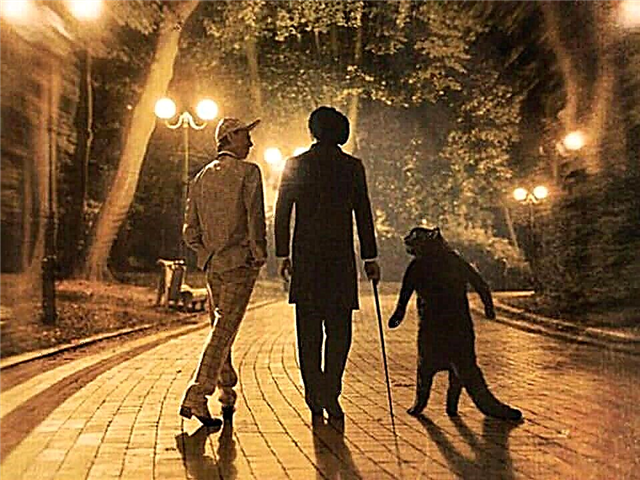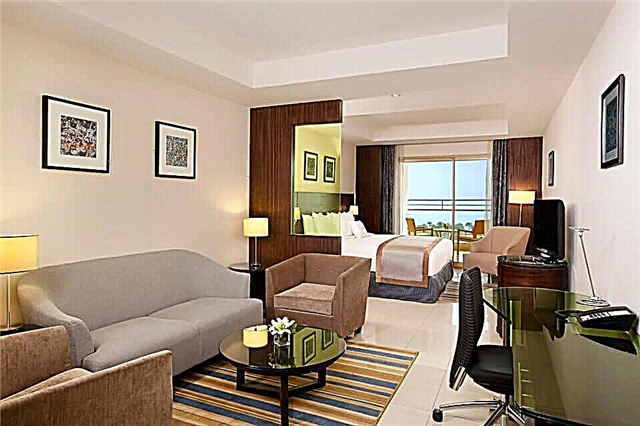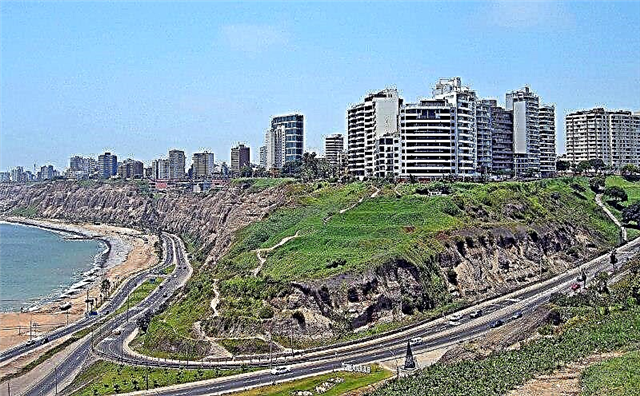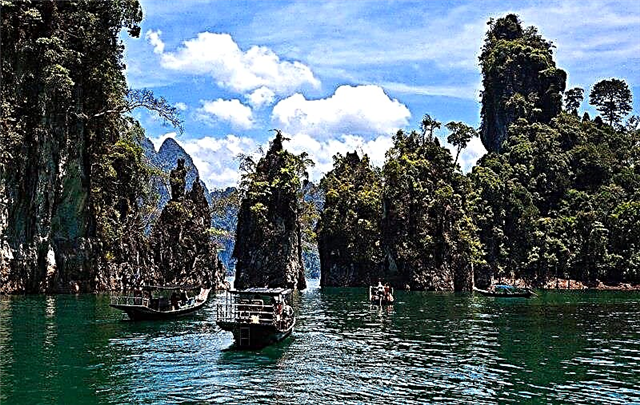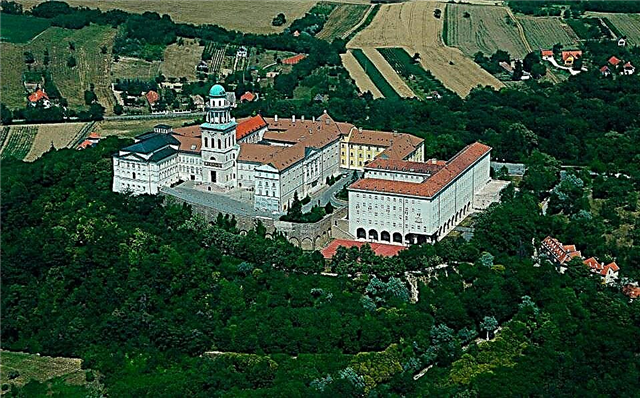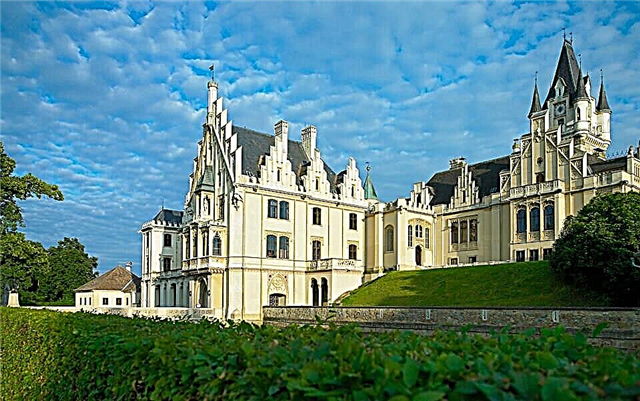If you are planning a trip to the capital of Austria, then you will have a unique opportunity to get acquainted not only with its amazing sights, but also see the cultural and historical monuments of the Viennese environs and other European cities. Many unforgettable trips are organized throughout the tourist season. We will tell you where you can go from Vienna for one day on your own.
Franzensburg castle

Those who watched the thrillingly romantic film about Empress Sisi (Franz's wife), beloved by the Austrians, remember the episodes of her walk in the beautiful old park Laxenburg. In the 13th century. the park space served as a place for royal hunting, and in the 19th century. the romantic emperor ordered to build an extraordinary castle here as a sign of respect for the knightly past of his ancestors. During your acquaintance with the neo-Gothic architectural masterpiece, you will hear the history of the construction of the castle, the story of the romantic love of Sisi and Franz, and you will see a lot of interesting things.
Surrounded by truly magnificent floristic landscapes, a building that looks like a precious box rises: bright stained-glass windows of Gothic windows, expressive spiers and turrets, many marble sculptures look fabulous. Inside the castle there is a rich collection of household items and works of applied medieval art. In the park, one cannot but admire the authentic graceful gazebos, a picturesque island and a lake with swans and landscape paintings.
Kreuzenstein castle

Spectators of the shocking Hollywood thriller “The Time of the Witches should have remembered the ancient knight's castle, in which the main episodes of the film were filmed. Its Gothic turrets, battlements, drawbridge - vivid signs of medieval fortresses suggest the authenticity of the grandiose structure. However, the history of the castle (13th century) indicates that it was blown up by Swedish conquerors in the 17th century. and restored in the 19th century. Counts Wilczek, who understood the historical significance of the fortress.
A journey through the "labyrinths" of Kreuzenstein is a fascinating immersion in the atmosphere of medieval life. Everything is interesting here: powerful walls, arrangement of the courtyard and interiors. A solid exposition with a large set of ancient weapons, a hall of knightly armor and symbols amazes the imagination. Surprisingly, a huge wooden kitchen table, which was once a bridge on the river. Salzburg. During the tour, the guide tells a lot about the history of the castle, including the legends about its ghosts.
Klosterneuburg

An undoubted success for tourists will be a trip to an incredibly beautiful ancient town (900 years old) in the federal state of Lower Austria - Klosterneuburg. Its historical center is a kind of open-air medieval museum, each house, each building of which is a beautiful architectural monument. The central square with the Plague Column, statues of saints and great personalities of the past are true testimonies of the glorious and tragic past. The most important sightseeing object is the amazing Augustinian monastery. At the entrance is the church of St. Mary, captivating the eye with its gothic beauty.
Openwork towers with pointed domes, wall ornaments, graceful vaults, as if carved from ivory by a virtuoso chisel, make the Romanesque basilica a work of art of religious architecture. Inside the church there is a unique organ (valuable rarity from 1642). Floral "carpets", fountains and monuments adorn the territory of the monastery. In 3 rooms of its "treasury" magnificent examples of jewelry are demonstrated, including 2 state crowns; exclusive royal outfits adorned with precious stones and gold. Many interesting things can be seen in the monastery still functioning.
Grafenegg Castle

In Lower Austria, there is another true architectural wonder - Grafenegg Castle. It is located among a picturesque pompous park, as if hiding under the shade of spreading trees, but when it opens in all its glory, it makes you freeze with admiration for the stately beauty of the facades. It is difficult to describe this architectural and artistic masterpiece in words, to see it is an indisputable success! Built in the 14th century. the palace complex embodied the architectural elements of the past centuries - from the late Gothic, Biedermeier, Renaissance and Neo-Gothic.
The palace was reconstructed in 1840-72, carried out by the new owners, the Counts of Breuners, to its current enchantingly romantic appearance. Cassette wooden ceilings, carved panels of precious wood, intricately decorated fireplaces, artistic wall paintings, graceful statues, paintings and portraits, rare furniture create an extraordinary splendor of the interior interiors. Everything here is admirable, a visit to the castle is an aesthetic pleasure.
Liechtenstein castle
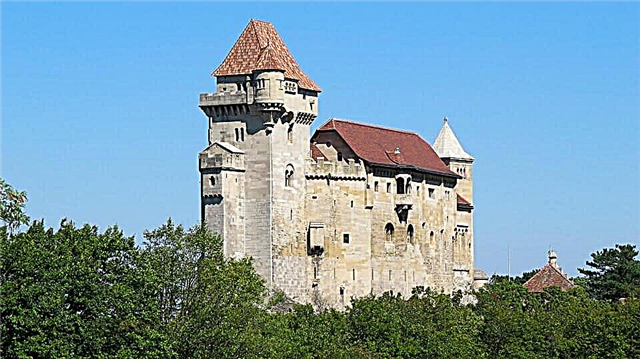
For those who did not know about the existence of the tiny state of Liechtenstein before, a trip here will be especially interesting. The Castle Principality of Liechtenstein is located in the small town of Maria Enzersdorf, located on the outskirts of the famous Vienna Woods. The history of the ancient castle, erected by the ancestor of the princely dynasty, began in 1135.
The past eras more than once left traces of destruction and decay on the long-suffering structure, but by the beginning of the 19th century. the ancestral castle was thoroughly recreated and rebuilt after the 2nd World War, which caused considerable damage to it. An excursion to a unique dwarf state is not only an examination of the most valuable monument of early architecture, but also an acquaintance with the amazing history of the Liechtenstein dynasty, their role in the formation of Austria, with sad and joyful events of a noble family.
The road to the rarity lies among the irresistible natural beauty, and the castle itself stands proudly on a rocky hill. Inside, which can only be accessed as part of a guided group, everyone will experience strong impressions of the old interiors, restored from authentic sketches and drawings. The resurrected epoch of the 12th century, expanding the time frame, visibly appears before the amazed gaze of visitors, stirring their souls and hearts.
Grinzing village
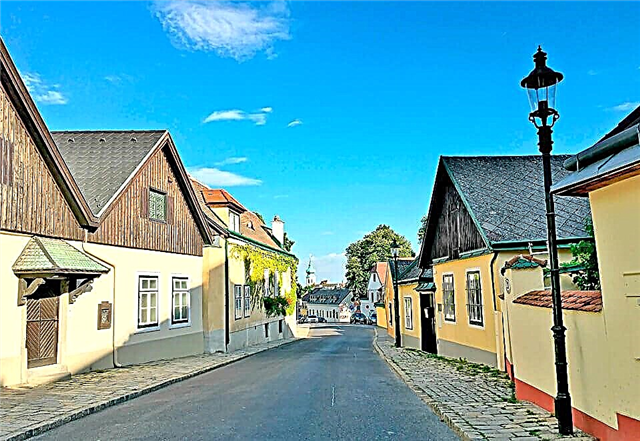
After the majestic beauty of Viennese buildings, a trip to the ancient village of Grinzing, in fact, a small, cozy town, will become an immersion in the patriarchal atmosphere of rural life. From the 17th century. Grinzing was an independent settlement located near the Vienna Woods, and then became part of Vienna, retaining its medieval authenticity in its appearance. Mainly winegrowers and winemakers live here, making excellent wines, famous not only in Austria, but also abroad.
Once on the narrow, clean streets of the town, you immediately feel the sweet, enchanting patriarchal "living" in adorable "gingerbread-toy" houses decorated with flower pots; in ancient arches entwined with grapes and ivy and wrought-iron lanterns; cozy courtyards; in the gray cobblestone sidewalks. The main attraction of Grinzig is the magnificent temple of late Gothic architecture in the very center of the town. At the end of an unforgettable walk, you can relax in one of the many heurigers (a local restaurant), sitting at a wooden table with a glass of delicious wine and an appetizing snack, as it was in the days of Schubert, Beethoven, Gogol, Mahler, etc.
Wachau Valley

Not visiting the unusually picturesque Danube Valley of the Wachau means depriving yourself of the pleasure of seeing the truly unearthly beauty of diverse landscapes, against which cultural and historical monuments are located.The results of archaeological excavations in the vicinity of the cities of Melk and Krems prove that people settled in these blessed places as early as the Neolithic era. The inhabitants of the valley grow grapes and fruits.
Worthy of attention is the mesmerizing sight of the majestic Danube, smoothly carrying its waters among the wooded banks. It is impossible not to admire the green hills of the Dunkensteilwald and the high cliffs soaring upward, the even rows of vineyards and the walls of the ancient monasteries of Melk and Göttweig. A visit to Dürnstein Castle will be an impressive event of the trip, and in general, an excursion to the valley will give you the opportunity to see how the Austrians respect nature and how sacredly revered the monuments of the past. Wachau is a UNESCO World Heritage Site (since 2000).
Vienna Woods

Invaluable treasures of Austria - oak and beech forests, called the Vienna Woods, captured in Strauss waltzes, are spread in the vicinity of Vienna on pl. 1250 km "Green lungs" of the Austrian capital, formed over millions of years under the influence of geological and climatic factors, have a unique flora and fauna. The Vienna Woods was popular among the Celtic tribes, and today this fabulously beautiful "mini-state" is a favorite vacation spot for Viennese and tourists.
To see the most important sights of the Vienna Woods, you need to visit it with a guide. On the way, he will introduce you to interesting historical facts, show you the Schubert house, the magnificent Liechtenstein castle and other objects. A walk along cozy alleys, among green hills, will lead to the ruins of an ancient fortress (11th century) on Mount Leopoldsberg. From the top you can endlessly admire the incredibly beautiful alpine landscapes. A visit to the spa town of Baden will be a bright final "chord" of the trip.
Melk Abbey

A trip to the small provincial town of Melk, located on the western edge of the Wachau Valley, will acquaint you with its amazing sights and give the most pleasant experience. The old buildings of the post office, the city church, the bread shop are monuments of medieval architecture that arouse interest. It is not bad to visit local museums, where extraordinary exhibits are presented, to visit the source of St. Koloman, whose day is celebrated annually on 13.10.
On Trinity Day, the town celebrates Baroque art festivals. But the most attractive unique object of Melk is the old Benedictine monastery. The beautifully decorated entrance walls of the former residence of Margrave Leopold I (1089) welcome guests with sculptures of Saints Leopold and Koloman, installed on both sides of the entrance. The descendants of Leopold transferred the fortress-residence into the possession of the Benectine monks.
For 9 centuries there has been an abbey, where monks live today, living according to the statute of St. Benedict. The view of the ancient bastions surrounding the monastery, collections of ancient manuscripts, church regalia and art objects are impressive. One cannot but admire the Marble Hall, the Imperial Staircase, the Church of Saints Peter and Paul, and a wonderful park. The monastery library impresses with its decoration, the number of folios and manuscripts.
Krems

This charming old town, located at the confluence of the Krems and Danube rivers, was an important trading point in the Middle Ages. It was in it that the Austrian pfennings, called Creme, were first printed. Surrounded by garden terraces and vineyards, the city captivates with its patriarchal beauty. The unique building of the city is the Piarsthenkirche church, built in the 15th century. on the site of an old Romanesque church. Reconstruction of facades of the 16th century created their late Gothic appearance, repeating the appearance of the Vienna Cathedral of St. Stefan.
The interior decoration of the temple is impressive with baroque decorations, the image of the Virgin Mary by M. Schmidt. It will be interesting to visit the parish church of St. Witt, which is the first example of the Austrian Baroque era. Climbing the medieval Powder Tower will allow you to take in the magnificent picture of Lower Austria. The old Town Hall and the Gotzburg Palace - wonderful architectural monuments of the Renaissance will not go unnoticed.
Bratislava

An old Czech city, which became in the 21st century. the capital of Slovakia, has acquired the status of a popular tourist destination. In Bratislava, the beauty of the Danube, past eras, captured in medieval castles and palaces, and the present time, in the modern attributes of a young European capital, are closely intertwined. The Danube, which cuts the city into 2 parts, makes it very picturesque. The abundance of historical and cultural monuments turns the city into an open-air museum, in which there are many interesting things. Inspection of the city begins with its "heart" - Bratislava Castle, from which Bratislava was born.
This is a monumental fortress castle of the 10th century, located on a Danube cliff, repeatedly rebuilt and rebuilt again in 1968. From its observation platforms, amazing views of the Danube valley open up. The oldest building is the St. Michael was an important fortification of a medieval fortress. At the confluence of the Danube and Moravian waters, there is a no less unique monument of antiquity - the Devin castle, past which important trade routes passed. An amazing construction of our time - the New Bridge, striking with its unusual suspended structure, which has only 1 support, despite its impressive length.
Puchberg am Schneeberg

A trip to a small resort town, the name of which combines the names of 2 mountains, is known as a fair commune - a venue for various fairs. But the latter fact is not paramount in choosing a trip. This is an occasion to see a typical alpine village and feel the irresistible provincial beauty of charming landscapes, local household and cultural traditions. A walk along the clean streets will give you the opportunity to admire small houses with beautiful neat facades, with ivy winding along them.
Bakeries (bakeries with amazingly tasty bread) will meet in a series of street buildings. In the center of the commune, there is a real paradise - a large pond surrounded by green lawns, shady plane trees, oaks and hornbeams. Here you can sit on the shore and watch black swans and ducks, see trout in the transparent water column. The local tourist train "Salamander" will take you to the top of the mountain, from where you can see the stunning surroundings, where you can go to a small church and pray in front of the sculptural image of the Virgin. The beauty of the Alpine nature will remain in the imagination for a long time.
Baden

The wonderful spa town of Baden, located in a fertile corner of the Vienna Woods, boasts a long spa history. Back in the 15th century. its thermal springs were popular with the population. In the first half of the 19th century, when Baden became the summer residence of the Austrian emperor, a stream of famous vacationers from all over Europe poured here. The unique charm of a small resort town, living in its shady streets, in luxurious Biederbayer villas, lovely cafes and cozy heurigers, encompasses from the very first steps.
Many objects here are associated with the names of great composers and musicians. The city church remembers the concerts of the great Mozart, there is a house-museum of Beethoven, who loved to visit Baden in the summer. A memorable place is the restaurant "Sauerhof", which was frequented by K. Weber. An interesting resort park, where concerts of the father and son of the Strauss took place, and now every day you can hear performances of various musicians and singers here. I. Strauss, working on the famous operetta "The Bat", meant Baden as the place of action.
Linz

The third most important city in the country and the capital of Upper Austria - Linz is located on the Danube bank, between Vienna and Salzburg.Its development began with a border point controlling the border with Germany (410). The historical past is captured in it in old baroque buildings, churches and abbeys, cozy authentic taverns and pubs.
Today the city is a highly developed cultural and tourist center with many theaters and concert halls, with modern modern buildings. The main square of the city on the banks of the Danube is a popular place among tourists: the old Town Hall, the Ursulinehof monastery castle, and the Landhaus government building are located here. In the historical center, the Abbeys of Wilchering and St. Florian, the magnificent Catholic Cathedral of the Immaculate Conception of the Blessed Virgin Mary, in which the authenticity of the design in the form of frescoes, beautiful stained-glass windows, and wooden decorations have been largely preserved, are of indispensable interest for travelers.
One cannot indifferently walk past the monument of medieval baroque architecture - Rosenau Castle. In the vicinity of Linz there is the Holzheim Palace, the first information about which appeared in 1075. Despite the fire (18th century), which brought the palace almost complete destruction, it was completely restored to its original form.
Hallstatt

In a remote corner of the Austrian Alps, there is a truly unique town of Hallstatt, surrounded by the lake of the same name, on the one hand, and high cliffs, on the other. Despite such an inconvenient location, this place is considered the oldest settlement in Europe. People were attracted here by the salt deposits, which have been mined here for more than 3 thousand years. As a result of excavations carried out in the 19th century, prehistoric burials (Iron Age) were discovered. As a result of this discovery, an archaeological concept appeared - the Gallstatt culture (900-400 BC). A town with a population of 1,000 people has nowhere to grow due to an acute shortage of land. That is why there is an extraordinary attraction Kostnitsa - a repository of human bones and skulls.
According to a long tradition, people are buried in the ground, and after 10 years their bones are removed from the graves, cleaned, bleached, the skulls are decorated with paintings, indicating their data, and put in a crypt where relatives and tourists come. The amazing beauty of the surrounding landscapes, wonderful pedestrian streets, wonderful buildings look just fabulous. Transport routes are laid in tunnels cut in the rocks. You can leave your cars in the same underground parking lots. A trip to this fantastic location will bring a lot of unforgettable impressions.
Graz

A city that combines the brilliant past of the Habsburg era and successful modernity, Graz has features of the Renaissance, Baroque and Art Nouveau in its architectural appearance. In many ways provincial, but not devoid of metropolitan gloss and splendor, the main city of Styria is always happy to show its guests many amazing historical and cultural monuments. On the central square. Hauptplatz is attracted by the magnificent building of the Town Hall, the Franciscan Church, the Clock Tower with an old bell and an amazing clockwork.
The Kunsthaus Art Museum (2003), housed in an interesting futuristic building, holds temporary exhibitions. The Jesuit Cathedral of St. Aegidia, striking with the luxury of interior decoration. A true masterpiece of the Italian Renaissance - the house of the 16th century. with a courtyard surrounded by arcades, the Landhaus (against which concerts and performances are held). The pearl of the Baroque style - the Attems Palace and other architectural structures of the past are an invaluable heritage of Graz.
Salzburg

The city, glorified by the genius Mozart, cannot but excite the imagination. The beauty of its squares and squares, magnificent palaces and museums delights and captivates, forcing one to think that such a creator of music as Mozart could have been born only here. Salzburg (Old Town), along with the outstanding cultural heritage sites of the world, is included in the UNESCO list as the best city on the planet. Of undoubted interest is the Old Town - the historical center, where each building is an example of one of the architectural trends, a monument of some era.
The Cathedral of St. Ruprecht in the Gothic style, where Mozart was baptized, the medieval monastery of St. Peter. The residences of the Archbishop (Old and New) and the Franciscan Church are impressive with their views. You cannot pass by the famous house where W.A.Mozart was born. Salzburg amazes with its beauty and variety of architectural styles.
Budapest

The most beautiful European city of Budapest is deservedly considered the "pearl of the Danube". Its location on both sides of the river makes the Hungarian capital a unique, inimitable beauty. The picturesque embankments of Buda and Pest are a favorite place for residents and tourists to walk, the handsome bridge over the Danube fits well into the city landscape. The rich history of development has left amazing architectural monuments captivating with ancient charm. "Heart" of Budapest - pl. Heroes are the focus of sculptural monuments depicting glorious events and great leaders of the state.
Two colonnades dedicated to Hungarian heroes house the majestic statues of the princes of Hungary from 3 ruling dynasties. In the center there is a majestic column crowned on top with a sculpture of the Archangel Gabriel, and below - with allegorical statues of virtues. The square is surrounded by many amazing architectural structures in the Gothic, Baroque and Renaissance styles: Vaidahunyad Castle, Szechenyi Baths, Art Gallery Mucharnok, Millennium Monument, Museum of Fine Arts, etc.
Brno

On the beautiful Moravian Plain, near the confluence of the Svitava and Svratka rivers, lies the picturesque town of Brno, famous for hosting industrial fairs of international importance. Brno was not chosen by chance as the venue - today it is a large, highly developed industrial center of Europe. But along with this, Brno can be proud of its ancient history and culture, unique monuments. The pride of Brno residents is the Dominican Church of St. Michael is a religious building of the Baroque style (17th century). The temple is surrounded by statues of saints, each of which is a true work of art.
An equally significant monument of the Middle Ages is the Spielberg fortress castle, located on the peak of the same name. As one of the most important symbols of Brno, it is depicted on Czech coins. 2 Gothic chapels stand near the castle It is impossible not to visit the Capuchin monastery, which surprises with the remains of monks stored in it, which are not subject to decay, thanks to a special ventilation system. Everyone's duty is to visit the Observatory named after the famous N. Copernicus, whose Planetarium is equipped with a powerful telescope.
Buy a bus ticket online for 849,00 ₽



